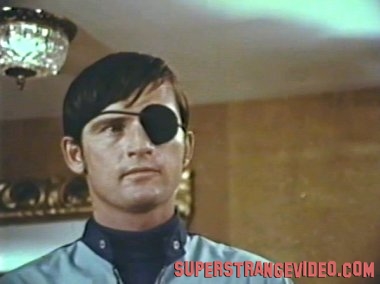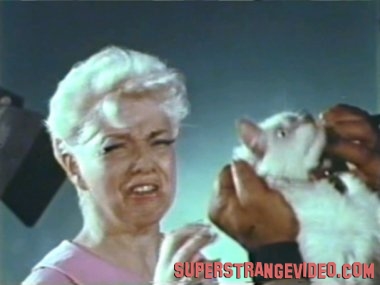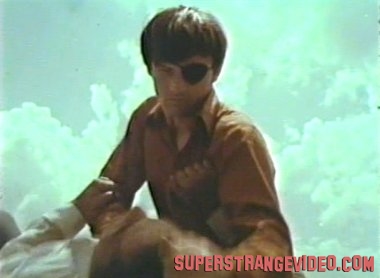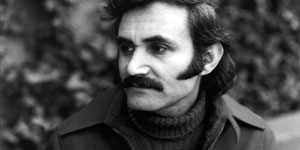REVISITING ‘REVENGE IS MY DESTINY’
REVISITING ‘REVENGE IS MY DESTINY’
Mardik Martin, the co-writer of Mean Streets and Raging Bull talks about his first feature
Kier-La Janisse
———————
Mardik Martin arrived in the United States in the 1950s by way of Iraq, penniless and unable to speak any English, and within a decade ended up writing or co-writing some of the most renowned American films of the 1970s: namely Martin Scorcese’s Mean Streets, New York New York and Raging Bull. He met Scorcese at New York University where they both studied film, and penned Scorcese’s student film It’s Not Just You, Murray! in 1964, the beginning of a fruitful relationship that would see the Mardik become the unlikely voice buy levitra overnight of Italian-Americans in the 1970s. “I lived in Greenwich Village in Manhattan while I was a student at NYU for eight years,” explains Martin. “The entire community where I lived was Italian. I also met Scorsese in my sophomore year at NYU and we became good friends in 1962. I spent a great deal of time at his parents’ home, eating delicious food and learning how they talked and lived.” His experience in the Italian community would be translated to the screen in Scorcese’s films – including the documentary Italianamerican (1974), Scorcese’s documentary about his own parents – and Ken Russell’s lush bio-pic of the Italian-American actor Valentino (1977).
 As an Armenian born in Iran and raised in Baghdad, Martin often felt like an outside observer, and soaked up American culture like a sponge. The resultant dialogue in his films is rich and full of regional colloquialisms, and his ability to relate to outsider characters who “come from another place”, as he did, likely prompted the creation of Chris Robinson’s character in Martin’s first feature script, Revenge is My Destiny. Robinson plays an high quality cialis eyepatched Vietnam vet named Ross Archer, who comes home to find that his wife had left him and become involved with some shady business dealings.
As an Armenian born in Iran and raised in Baghdad, Martin often felt like an outside observer, and soaked up American culture like a sponge. The resultant dialogue in his films is rich and full of regional colloquialisms, and his ability to relate to outsider characters who “come from another place”, as he did, likely prompted the creation of Chris Robinson’s character in Martin’s first feature script, Revenge is My Destiny. Robinson plays an high quality cialis eyepatched Vietnam vet named Ross Archer, who comes home to find that his wife had left him and become involved with some shady business dealings.
There’s no of shortage of films – genre pictures or otherwise – that deal with the homecoming experience of Vietnam vets. But while the ‘vet on film’ is typically a means of addressing the horrors of war and post-traumatic stress, Martin’s film goes in another direction entirely. Archer’s war-vet status has little bearing on the story other than as a means of explaining why he’s been away. For a picture made in 1971, this lack of exploration into the vet psyche is surprising. But creating a psychological drama wasn’t as compelling to Martin as throwing a nod in the direction of classic film noir. “To me the message is not as important as the story,” he says, “I’m interested in telling a story as writers have been doing for thousands of years. My main concern is to communicate with my audience by creating interesting characters in conflict.” And while Revenge is my Destiny suffers from budgetary limitations, its tight script and sleazy performances raise the film a notch above the usual exploitation fare that often circulated in southern drive-ins.
 While both Martin and director Joseph Adler were NYU students at the time of writing, the film was borne of a very specific milieu: the kitschy comedy nightclubs, dive bars, tacky wig shops, and faux-glamour of Miami, where the film was shot (Adler also directed the Miami-based Convention Girls in 1978, and has since gone on to be a nominal figure in the Miami live theatre scene). The decision was initially a practical one (“Miami was in mind from the beginning because we had to shoot it there since Joe Adler, the director, lived there. He had a lot of people who could help for free.”), but the location is central to the film’s aesthetic and characterizations. Funded in part by a group of airline pilots who wanted to invest in the movie biz, Adler and Martin set about creating a no-fat noir thriller that would prove to be an important step towards the writing Martin would do for Scorcese’s Mean Streets two years later.
While both Martin and director Joseph Adler were NYU students at the time of writing, the film was borne of a very specific milieu: the kitschy comedy nightclubs, dive bars, tacky wig shops, and faux-glamour of Miami, where the film was shot (Adler also directed the Miami-based Convention Girls in 1978, and has since gone on to be a nominal figure in the Miami live theatre scene). The decision was initially a practical one (“Miami was in mind from the beginning because we had to shoot it there since Joe Adler, the director, lived there. He had a lot of people who could help for free.”), but the location is central to the film’s aesthetic and characterizations. Funded in part by a group of airline pilots who wanted to invest in the movie biz, Adler and Martin set about creating a no-fat noir thriller that would prove to be an important step towards the writing Martin would do for Scorcese’s Mean Streets two years later.
“I was 19 when I wrote Revenge Is My Destiny,” says Martin. “I had barely learned how to tell a story. That was my main purpose, to tell a story. There was no implied philosophical message dealing with Vietnam or anything remotely analytical. I was very new at everything, so I made a lot of writing mistakes. I’m not sure if Joseph Adler was ready to direct a movie yet, either. But we tried, which is the important thing. I was right there during the entire production, with suggestions and re-writes.”
 Like the characters in Mean Streets, the character of Ross Archer in Revenge is my Destiny is not especially sympathetic; even though he is the protagonist and has been clearly cuckolded by his wife, Robinson pays him with a cool detachment that challenges viewers to like him. He’s a tough-as-nails, no bullshit character with a weak spot for a woman (who he nevertheless slaps around and threatens to murder). They have the volatile attraction/repulsion kind of relationship that pulp stories are made of. But he’s not the only person she’s been fooling: her interim sugar-daddy – the sweaty, hunched, unfunny comedian and nightclub owner Maxie Marks (played by Joe E. Ross of Car 54, Where Are You?, who had fittingly learned his trade playing in burlesque clubs) – has also been getting a raw deal. Like any femme fatale, she’s holding most of the cards, and psychosexual resentment builds up around her from all angles as the men in her life catch on to her tricks.
Like the characters in Mean Streets, the character of Ross Archer in Revenge is my Destiny is not especially sympathetic; even though he is the protagonist and has been clearly cuckolded by his wife, Robinson pays him with a cool detachment that challenges viewers to like him. He’s a tough-as-nails, no bullshit character with a weak spot for a woman (who he nevertheless slaps around and threatens to murder). They have the volatile attraction/repulsion kind of relationship that pulp stories are made of. But he’s not the only person she’s been fooling: her interim sugar-daddy – the sweaty, hunched, unfunny comedian and nightclub owner Maxie Marks (played by Joe E. Ross of Car 54, Where Are You?, who had fittingly learned his trade playing in burlesque clubs) – has also been getting a raw deal. Like any femme fatale, she’s holding most of the cards, and psychosexual resentment builds up around her from all angles as the men in her life catch on to her tricks.
The colourful spate of characters – a Nazi war criminal (played by Sidney Blackmer of Duel in the Sun and Rosemary’s Baby, in one of his last roles), an abortionist, a washed-up comedian (whose lame jokes are partially written by Mardik Martin), a sassy go-go dancer, an eye-patched Vietnam vet, a gay wig designer, a boxer-turned-thug, a femme fatale – seems pretty ambitious for a first feature. Most people give the advice to keep it simple the first time around – so in hindsight would Martin write it the same way? “Yes,” he asserts. “But I didn’t know any better then.”
But Revenge is my Destiny shows just how far a smart script and access to some cool free locations can go. Martin himself doesn’t really recognize the merit of the film (“You really like that film? Why??! It’s kind of awful.”), but there’s no doubt that it gave him the chops to write those iconic American films he is better known for. And it’s a hell of a lot of fun.

 November 1, 2011
November 1, 2011  No Comments
No Comments







